|
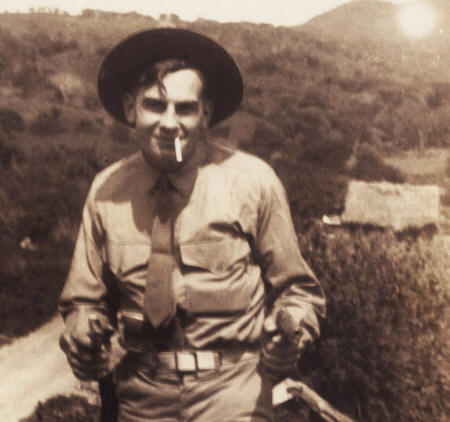 This is the eighth
webpage of photographs
from the collection of Private
First Class William Edward
Plocharski / Planter of the US
Marine Corps, who took these
photos during his deployment in
Las Segovias, Nicaragua, over a
period of two years, from
January 1928 to December 1929.
This is the eighth
webpage of photographs
from the collection of Private
First Class William Edward
Plocharski / Planter of the US
Marine Corps, who took these
photos during his deployment in
Las Segovias, Nicaragua, over a
period of two years, from
January 1928 to December 1929.
The larger
photos were scanned in
high resolution (600 dpi). The smaller
photos (of individual pages of the photo
album) were taken at lower resolution but show
the captions, and for that
reason are included here.
For a full high-resolution image
of each photo, click on
the thumbnail image on the
right-hand side of each Photo ID banner.
This collection has never been
published anywhere else.
I first learned of it in January
2018 thanks to the kind courtesy
of Private Plocharski's (Mr.
Planter's) daughter, Patricia
Barrow of Houston, Texas. I
thank Patricia Barrow and her
family for their generosity in
making these photographs
available and permitting their
publication here.
|
|
 Photo ID: Readers
- Plocharski - P8.01
• Liberal soldiers
disarm after Espino Negro, May
1927 Photo ID: Readers
- Plocharski - P8.01
• Liberal soldiers
disarm after Espino Negro, May
1927
|
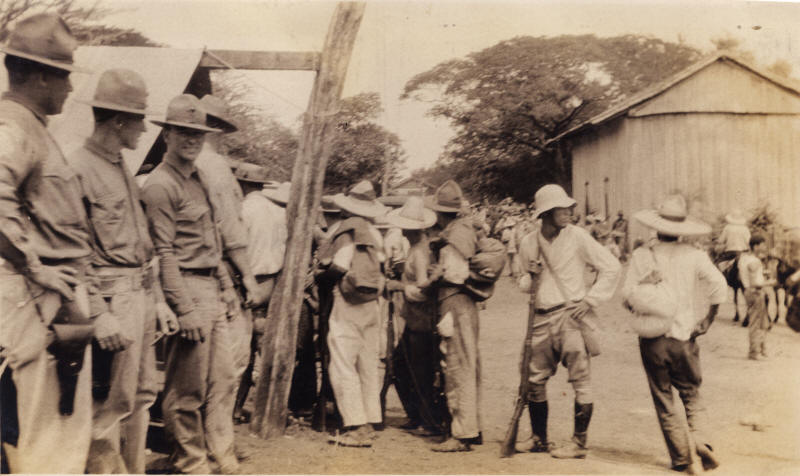
Caption: "Natives
turning their rifles and getting
10 Dollars a piece for them."
A wonderful photo capturing a
key historical moment in
Nicaraguan history.
Liberal soldiers turned in their
rifles for $10 each in the
aftermath of the Espino Negro
Accord of 4 May 1927 -- so this
photo must date to May or June
1927.

|
|
 Photo ID: Readers
- Plocharski - P8.02
• Unknown event
taking place in a Segovian town Photo ID: Readers
- Plocharski - P8.02
• Unknown event
taking place in a Segovian town
|
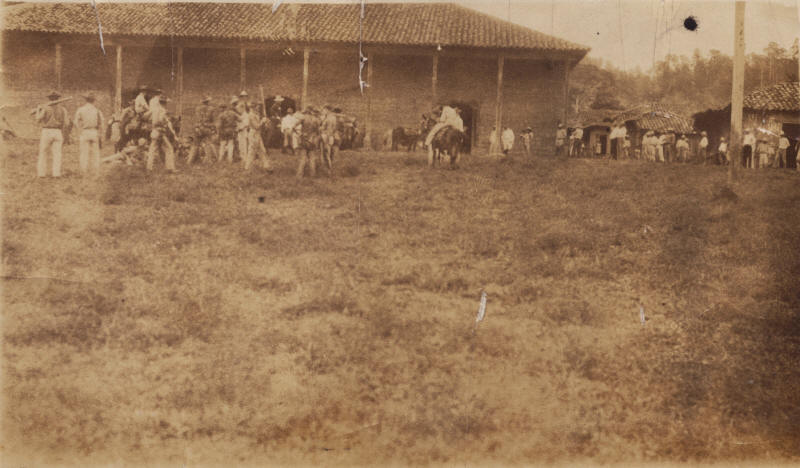
No caption.
Some 43 people in this
photograph, all but one of them
men & boys from what I can tell,
gathered next to a large
building in a town, with the
forested hills in the near
distance suggesting a rural area
in Las Segovias. A
spectacle of some kind is
unfolding in the open field;
exactly what kind of spectacle
is not clear. It doesn't
look like a ball game . . .
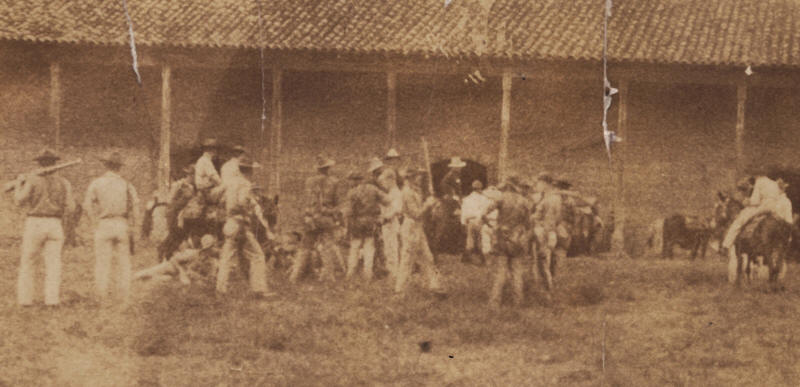
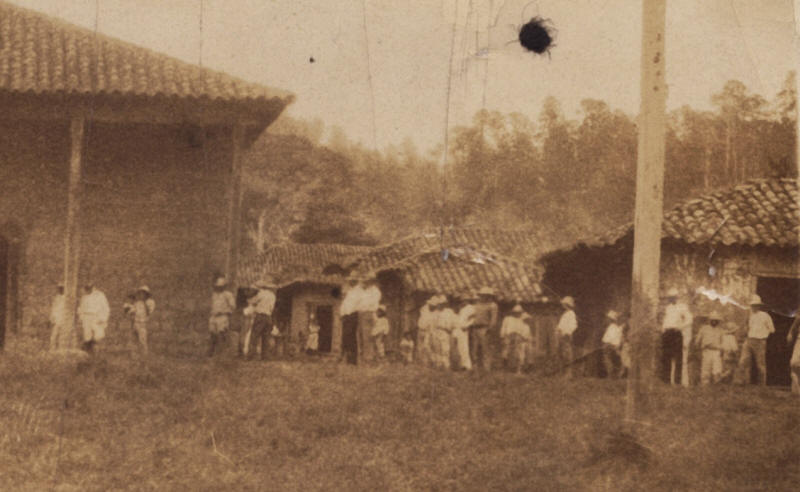
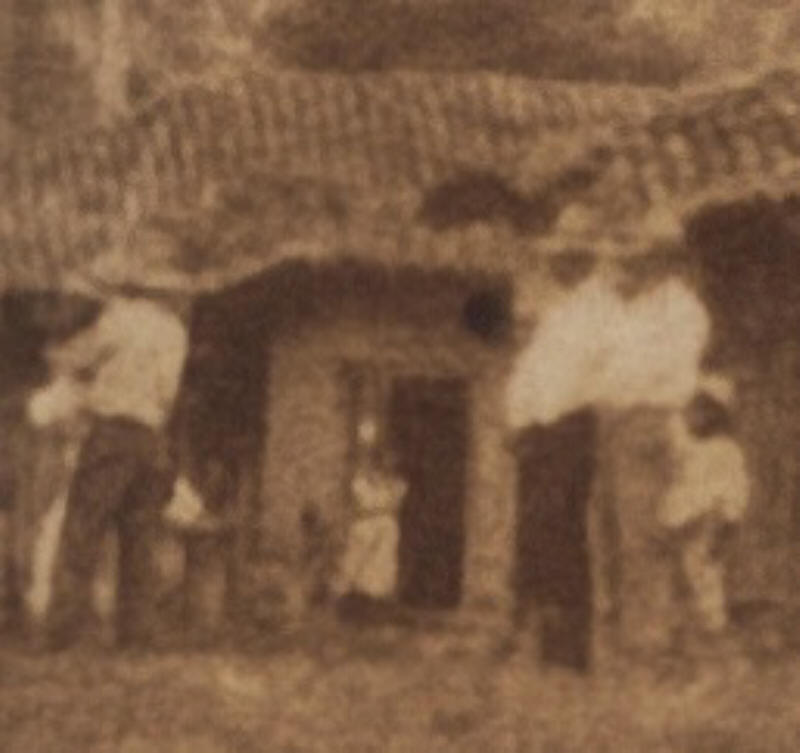
Above: a blurred, barely
visible woman stands in her
doorway watching the events from
a distance, through a crowd of
men and boys -- an expression of
the cultural restriction of
women's and girls' activities to
the domestic sphere of the
household, in contrast to the
active role played by men and
boys in the wider, public
sphere.
|
|
 Photo ID: Readers
- Plocharski - P8.03
• 46th Co.
baseball team, Jalapa Photo ID: Readers
- Plocharski - P8.03
• 46th Co.
baseball team, Jalapa
|
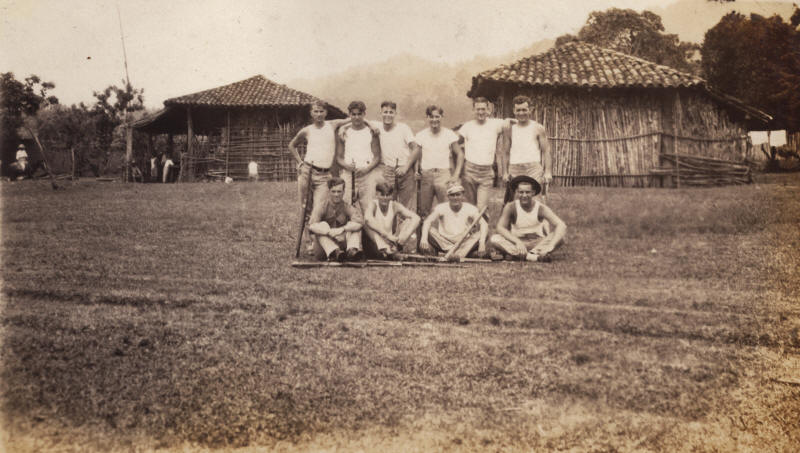
Caption: "Jalapa
Nic. 46th Co. Baseball Team"

|
|
 Photo ID: Readers
- Plocharski - P8.04
• "Calle
leading to the marine camp" Photo ID: Readers
- Plocharski - P8.04
• "Calle
leading to the marine camp"
|
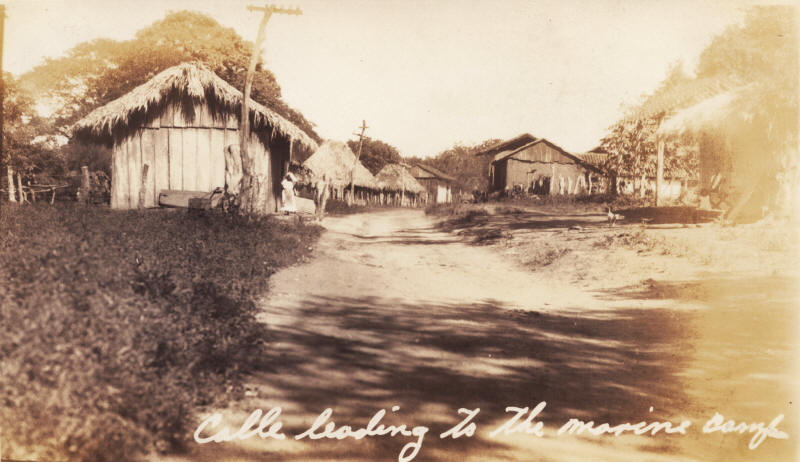
Caption: "Calle
leading to the marine camp".
Another wonderful photo, in a
bigger town or city with
electricity, judging from the
electrical poles marching down
the left side of the street.
What looks to be an elderly
woman stands in front of the
first house at left, her head
draped, directly facing the
person snapping the photograph.
Unless Pvt. Plocharski was at
the head of a column, which
seems unlikely, he probably took
this photo while out for a walk.
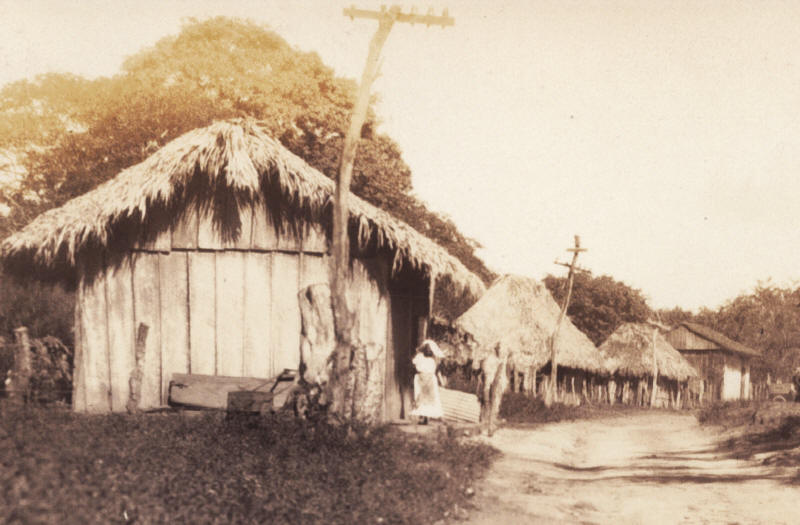
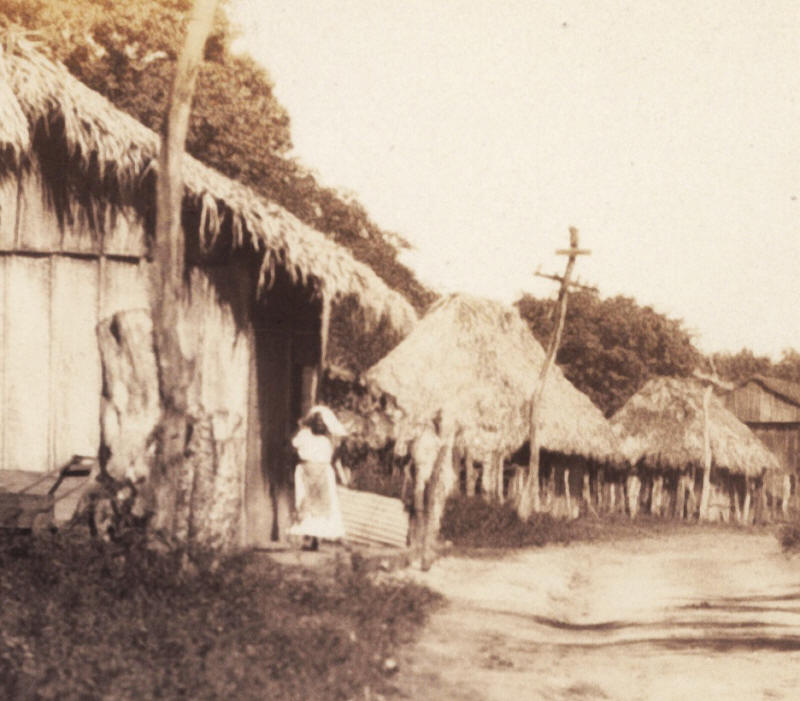
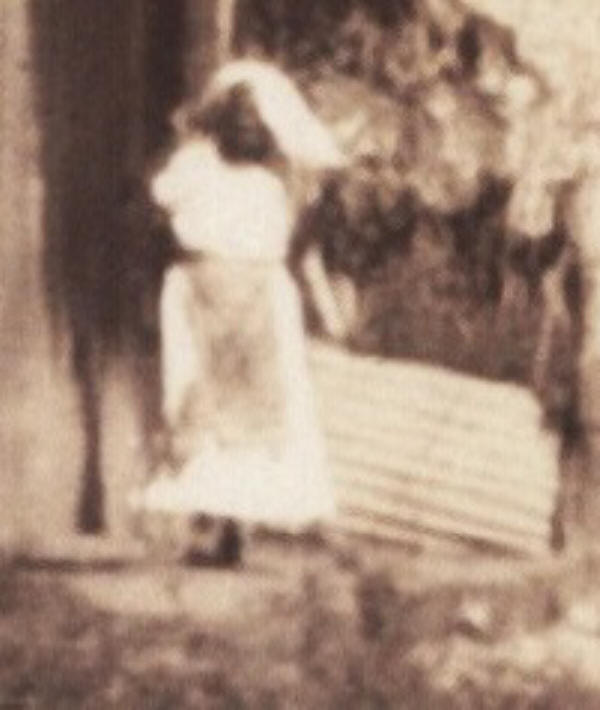
|
|
 Photo ID: Readers
- Plocharski - P8.05
• Baseball
game, 46th vs. 52nd Co., 11th
Regt., Jalapa Photo ID: Readers
- Plocharski - P8.05
• Baseball
game, 46th vs. 52nd Co., 11th
Regt., Jalapa
|
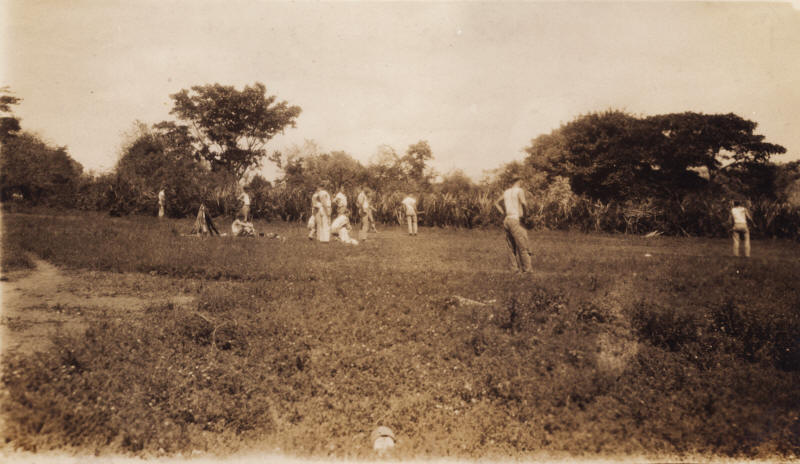
Caption: "Jalapa
Nic. 46th Co. playing against
52nd Co. for the 11 Regt."

|
|
 Photo ID: Readers
- Plocharski - P8.06
• "Crater,
Lake Managua" Photo ID: Readers
- Plocharski - P8.06
• "Crater,
Lake Managua"
|
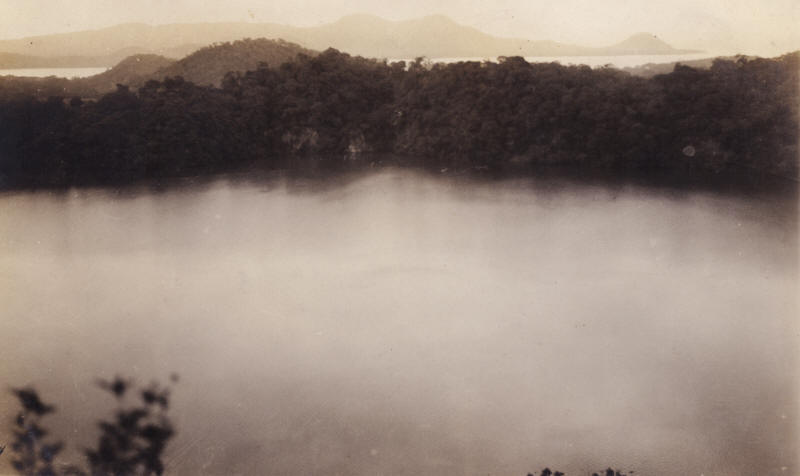
Caption: "Crater
Lake Managua".
|
|
 Photo ID: Readers
- Plocharski - P8.07
• "52nd Co.
leaving Jalapa" Photo ID: Readers
- Plocharski - P8.07
• "52nd Co.
leaving Jalapa"
|
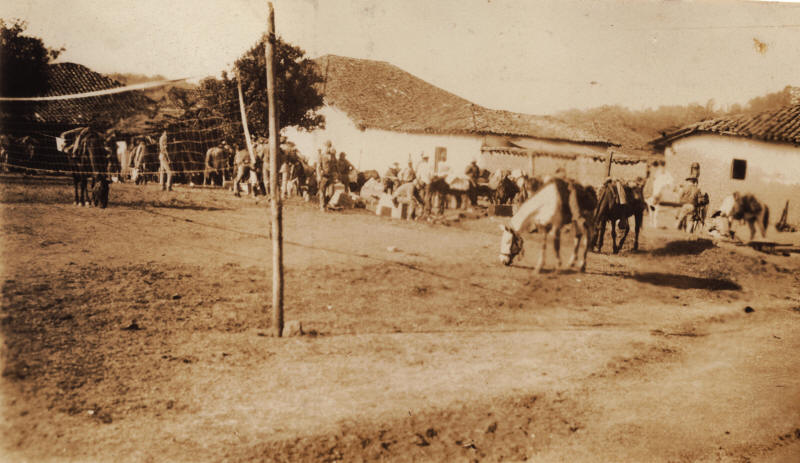
Caption: "52nd Co.
leaving Jalapa."
Another wonderful photo that
captures an ordinary moment of
movement and action among a
large number of men and horses &
mules (by my
count, 15 men and 13 horses &
mules). The seated Marine
at center-left below, and the
other men standing still,
suggest that this was a slow,
deliberate departure from
Jalapa. The shadows of the
horses and the sunshine
reflecting from the building
suggest a sunny morning around 8
o'clock. At least three men in
light-colored shirts and tall
sombreros, apparently
Nicaraguans, can be seen among
the darker-uniformed Marines.
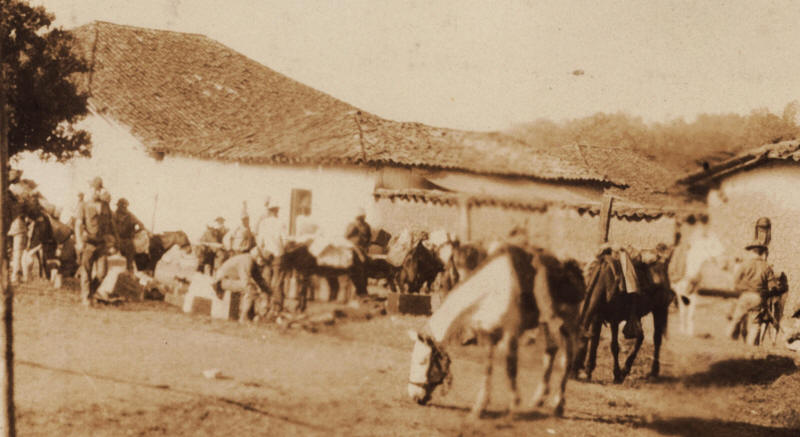
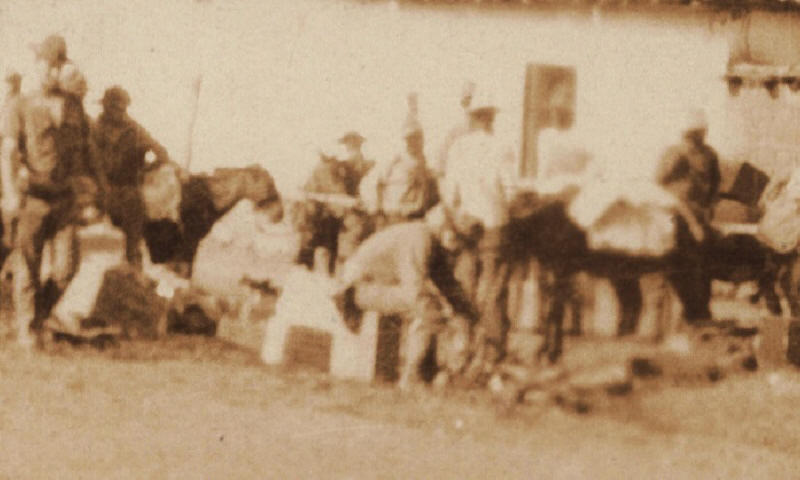

|
|
 Photo ID: Readers
- Plocharski - P8.08
• Bullfight
fiesta in Jinotega Photo ID: Readers
- Plocharski - P8.08
• Bullfight
fiesta in Jinotega
|
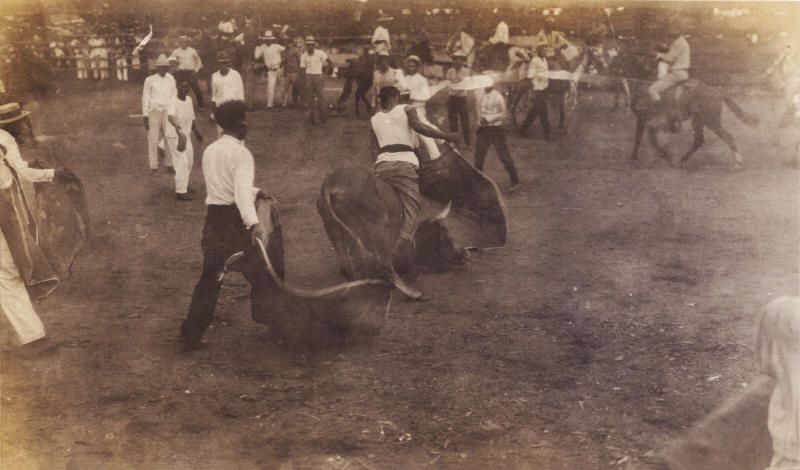
No caption: "Jinotega Nic.
Natives having a Fiesta."
Yet another gem of a photograph:
a Jinotega bullfight.
Three men carry specially
crafted muletas
(capes), probably made of
bull-hide. Two of the
muleta-sporting men
stride toward the third man in
front of them, who straddles a
just-downed bull whose muzzle is
about to scrape the dust.
A semi-circle of men facing the
just-downed bull stands at the
ready, poised to join the fray,
while men on horseback watch
from the rear. Behind them
stands the crowd on the other
side of corral fence.
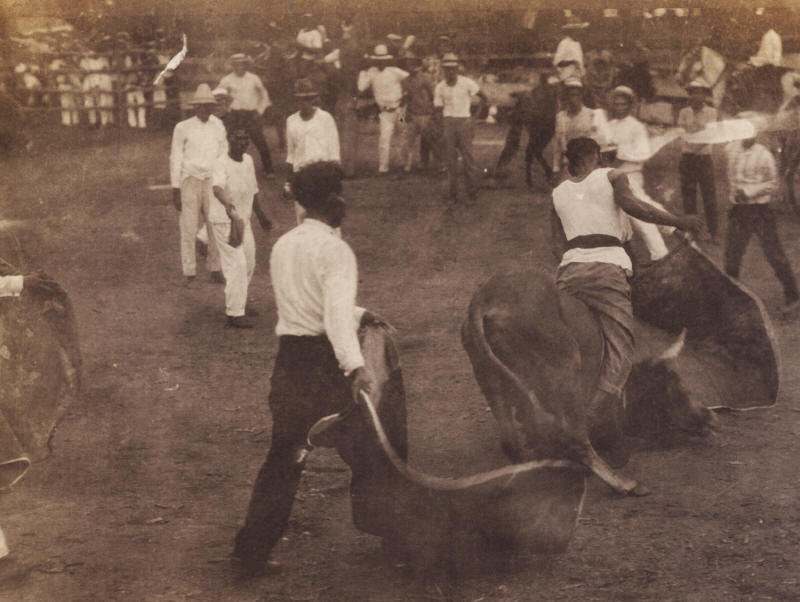

|
|
 Photo ID: Readers
- Plocharski - P8.09
• "After
bombardment, Chinandega, Nic." Photo ID: Readers
- Plocharski - P8.09
• "After
bombardment, Chinandega, Nic."
|
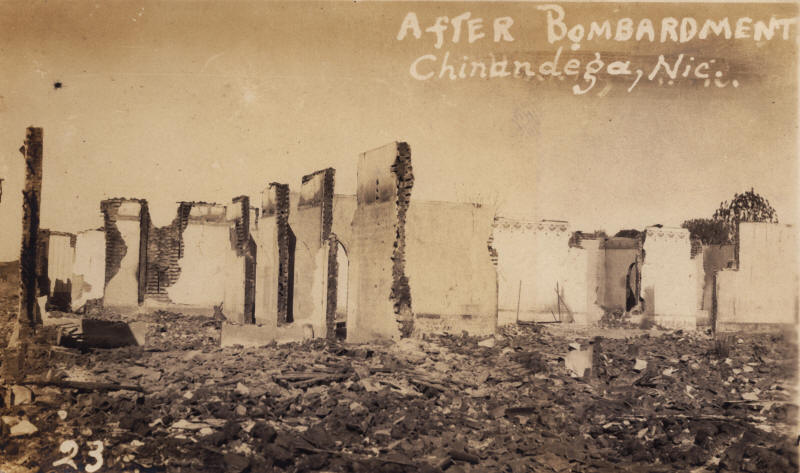
Caption: "AFTER
BOMBARDMENT Chinandega,
Nic." "23"
The caption refers to the
burning of Chinandega by
Conservative forces in February
1927, during the Civil War of
1926-27 that led to the US
intervention and the Sandino
rebellion. The US Marines
were not involved in the
Chinandega events.
Evidence indicates that the town
was burned by the Conservative
defenders, not the handful of
hand-thrown bombs of the two US
mercenaries hired by the
Conservative forces defending
the city from a Liberal attack.
These events took place months
before Pvt. Plocharski arrived
in Nicaragua, so this is
doubtless a reprint (also
suggested by the "23" at
lower-left). Obscured
fragments and shadows of letters
appear under the words,
"Chinandega, Nic." Unknown
what the obscured words might
have once said.
|
|
 Photo ID: Readers
- Plocharski - P8.10
• "Church in
Darío" Photo ID: Readers
- Plocharski - P8.10
• "Church in
Darío"
|
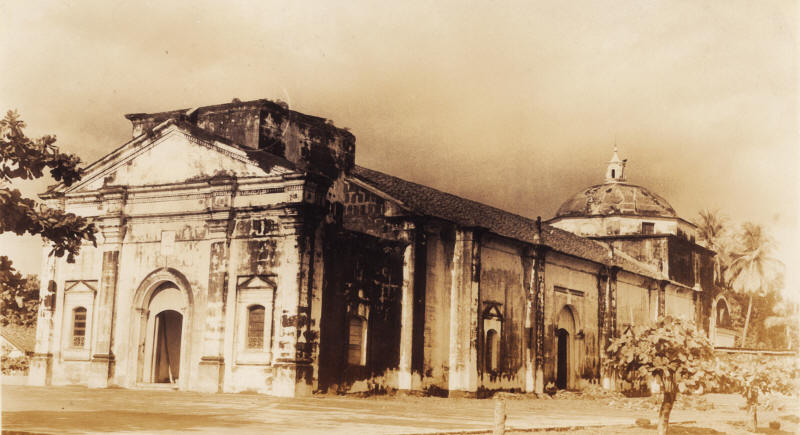
Caption: "Church in
Dario."
A lovely photo of
a beautiful church.

|
|

